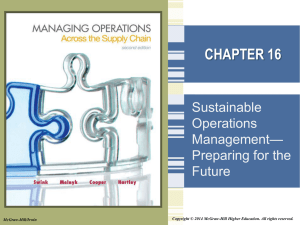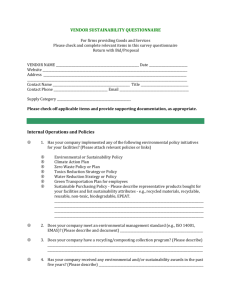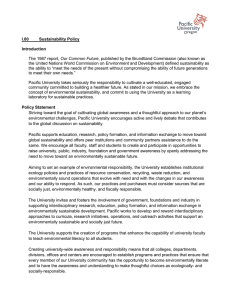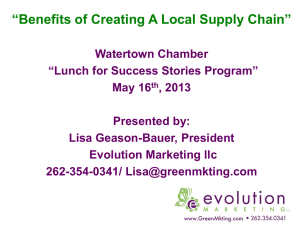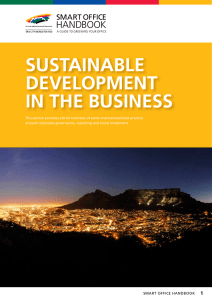STUDY OUTLINE FOR CHAPTER 17
advertisement
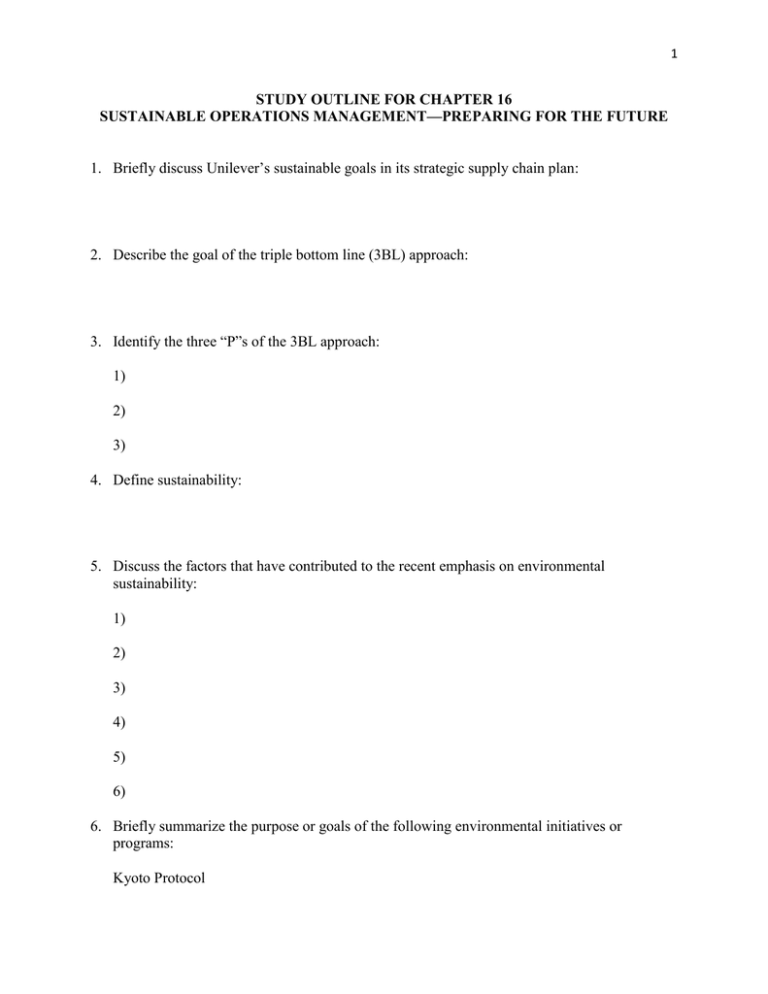
1 STUDY OUTLINE FOR CHAPTER 16 SUSTAINABLE OPERATIONS MANAGEMENT—PREPARING FOR THE FUTURE 1. Briefly discuss Unilever’s sustainable goals in its strategic supply chain plan: 2. Describe the goal of the triple bottom line (3BL) approach: 3. Identify the three “P”s of the 3BL approach: 1) 2) 3) 4. Define sustainability: 5. Discuss the factors that have contributed to the recent emphasis on environmental sustainability: 1) 2) 3) 4) 5) 6) 6. Briefly summarize the purpose or goals of the following environmental initiatives or programs: Kyoto Protocol 2 Responsible Care Renewable Fuel Standard Program Greenhouse Gas Reporting Program ISO 14000 Electronic Product Environmental Assessment Tool (EPEAT) Cradle to Cradle Standard LEED Certification 7. Define life cycle assessment: 8. Identify examples of wastes produced throughout the five product life cycle stages: Extraction Production Packaging and Transport Usage Disposal/Recycling 9. Describe the Environmentally Responsible Process/Material Matrix: 10. Discuss the carbon footprint of an organization: 3 11. Identify ways to prevent rather than minimize waste: 12. Discuss ISO 14000: 13. Identify the three responsibilities of an environmental management system (EMS): 1) 2) 3) 14. Discuss the challenges of being environmentally sustainable: 15. Identify the four key stakeholders for an organization and their expectations from the organization: 1) 2) 3) 4) 16. Explain how human rights issues in developing countries have affected the supply chains of many industries: 17. Discuss several ways that organizations support the communities in which they operate: 4 18. Briefly describe an organizational culture and why is it important to operations managers: 19. Discuss the role of organizational culture in integrated supply chain management: 20. Identify how nations or regions differ from each other: 1) 2) 3) 4) 5) 21. Discuss the impact of differences in national cultures on operations management efforts: 22. Define sustainable competitive advantage: 23. Identify the reasons that the expectations of an organization’s critical customers may change: 1) 2) 3) 4) 5 24. Discuss the two ways that new operational practices and technologies that are driven by environmental and social concerns can affect a firm’s profit: 1) 2) 25. Briefly discuss the new initiatives that firms have undertaken to measures their sustainability performance: 26. Identify the criteria used by the following organizations to evaluate sustainability performance: Dow Jones Sustainability Index Global Reporting Initiative (GRI) Global 100 Most Sustainable Companies The Ethical Consumer 27. Discuss the kinds of grassroots movements that some interest groups can launch to increase visibility of an organization’s sustainability performance:





